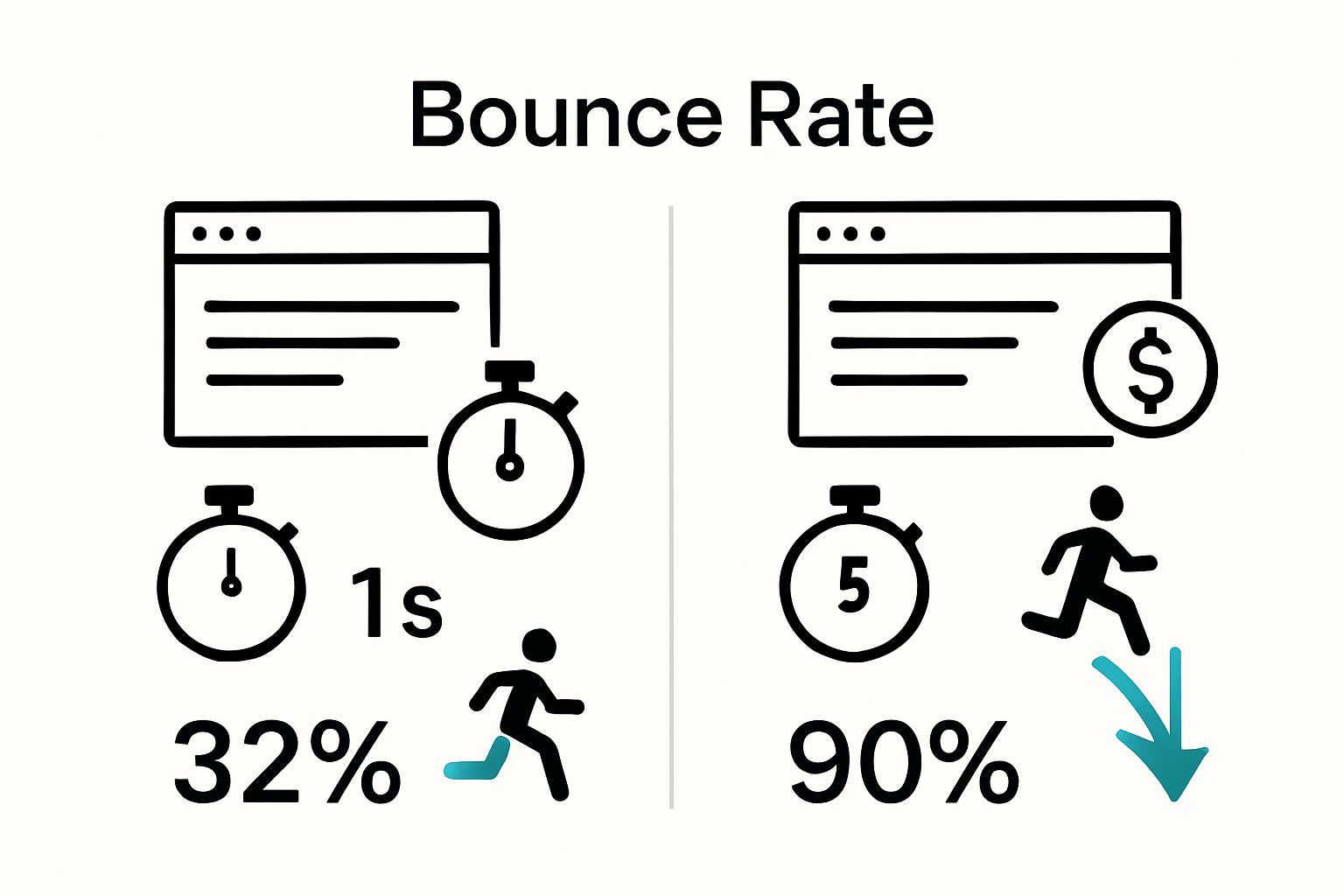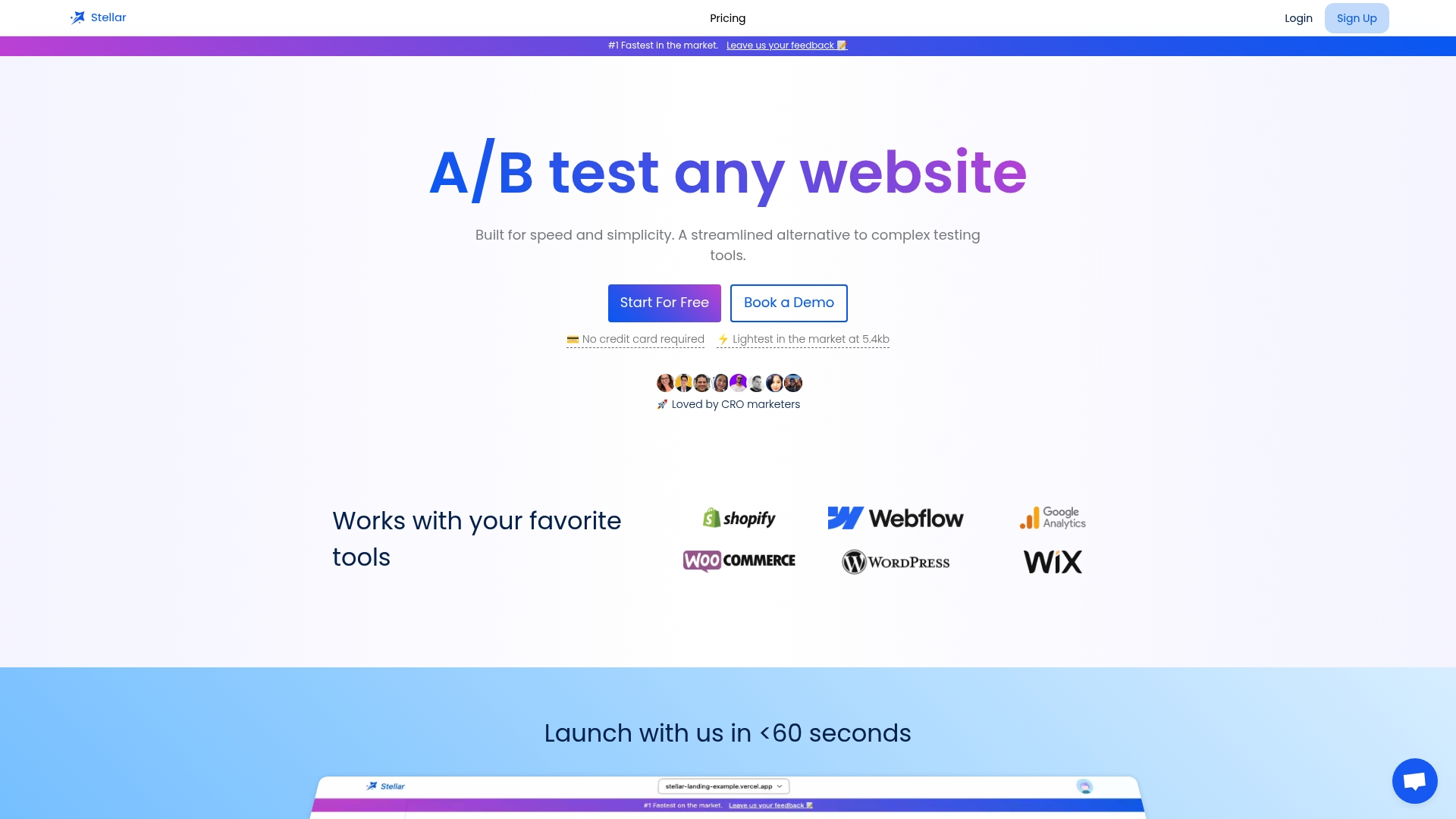
Understanding the Impact of Loading Speed on Performance

Website loading speed affects every aspect of how users interact with your site and even a tiny delay can have shocking results. If a page load jumps from 1 to 5 seconds, the chance of a user bouncing shoots up by 90 percent. Most people assume the problem is just about waiting a little longer but the real impact runs much deeper. Slow performance does not just annoy users, it can cost businesses real money and trust faster than you might think.
Table of Contents
- What Is Loading Speed And Its Measurement?
- Why The Impact Of Loading Speed Matters For Businesses
- How Loading Speed Influences User Behavior And Engagement
- Key Concepts Of Loading Speed Optimization And Performance
- Real-World Examples Of The Impact Of Loading Speed
Quick Summary
| Takeaway | Explanation |
|---|---|
| Optimize loading speed for better conversions | Slower websites face significant drops in conversion rates, impacting revenue and user engagement. |
| Loading speed affects user trust and perception | Websites perceived as slow may lose user trust, appearing less professional and reliable. |
| Milliseconds matter in user engagement | Faster loading times lead to lower bounce rates and higher user retention, enhancing overall engagement. |
| Use advanced tools for accurate performance insights | Employ modern analytics tools to simulate conditions and fine-tune website performance effectively. |
| Invest in holistic performance engineering | Optimize server, content design, and experience to build responsive and engaging digital platforms. |
What is Loading Speed and Its Measurement?
Loading speed represents the time required for a webpage to fully render and become interactive for users. This critical metric directly influences user experience, engagement, and conversion rates across digital platforms. Understanding loading speed goes beyond simply measuring seconds on a screen.
The following table organizes and defines the primary technical metrics used to measure webpage loading speed, as described earlier in this section.
| Metric | Definition |
|---|---|
| Time to First Byte (TTFB) | Time the browser waits to receive the first byte of response from the server |
| First Contentful Paint (FCP) | Point when initial page content becomes visible to the user |
| Time to Interactive (TTI) | Moment when the page is fully functional and responsive to user inputs |
Defining Web Loading Performance
Web loading performance encompasses multiple technical dimensions that collectively determine how quickly content becomes available to users. Google PageSpeed Insights evaluates loading speed through sophisticated metrics that analyze both technical infrastructure and user interaction patterns.
Key performance indicators for loading speed include:
- Time to First Byte (TTFB): Measures how long the browser waits to receive the first byte of response from the server
- First Contentful Paint (FCP): Tracks the moment when initial page content becomes visible
- Time to Interactive (TTI): Determines when a page becomes fully functional and responsive to user inputs
Technical Measurement Approaches
Professional web performance assessment involves multiple measurement techniques that provide comprehensive insights into loading dynamics. Analysts utilize both lab-based testing environments and real-world field data collection to generate accurate performance evaluations.
Advanced measurement tools simulate different network conditions, device types, and user scenarios to provide nuanced performance diagnostics. These tools help developers and marketers understand how loading speed impacts user experience across various technological contexts.
Modern web performance optimization requires a holistic approach that considers technical infrastructure, content design, and user experience. By systematically analyzing loading speed metrics, organizations can create faster, more responsive digital experiences that meet increasingly demanding user expectations.
Why the Impact of Loading Speed Matters for Businesses
In the digital marketplace, loading speed is no longer a technical nuance but a critical business performance driver that directly influences revenue, user engagement, and competitive positioning. Businesses that understand and optimize their web performance gain substantial strategic advantages in capturing and retaining customer attention.
To clarify the impact of slow loading on business outcomes, the table below summarizes key economic effects of poor web performance discussed in this section.
| Economic Impact | Description |
|---|---|
| Conversion Rate Reduction | Slower websites experience significant drops in potential customer conversions |
| Customer Abandonment | Users rapidly lose patience with sluggish web experiences |
| Brand Perception Damage | Slow websites are perceived as less professional and trustworthy |
| Increased Bounce Rates | The likelihood of users leaving before a page loads rises dramatically as load time increases |
| Lost Revenue Opportunities | Reduced user engagement directly leads to fewer sales and missed business opportunities |
Economic Implications of Web Performance
Research from Google reveals that as page load time increases from 1 to 5 seconds, the probability of user bounce rises dramatically by 90%.
 This statistic underscores the immediate financial consequences of poor loading performance.
This statistic underscores the immediate financial consequences of poor loading performance.
Key economic impacts include:
- Conversion Rate Reduction: Slower websites experience significant drops in potential customer conversions
- Customer Abandonment: Users rapidly lose patience with sluggish web experiences
- Brand Perception Damage: Slow websites are perceived as less professional and trustworthy
User Experience and Competitive Positioning
Loading speed serves as a fundamental differentiator in a crowded digital landscape. Modern consumers expect instantaneous digital interactions, and businesses that fail to meet these expectations risk losing market share. Learn more about website performance strategies to stay competitive.
Companies across industries recognize that web performance is not just a technical metric but a direct reflection of organizational efficiency and customer commitment. High-performing websites signal technical sophistication, customer respect, and a forward-thinking approach to digital engagement.
Professional digital strategists understand that loading speed represents more than milliseconds on a screen. It embodies a comprehensive approach to user experience, technological competence, and strategic brand positioning in an increasingly digital world.
How Loading Speed Influences User Behavior and Engagement
User behavior online is fundamentally shaped by web performance, with loading speed acting as a critical psychological and functional trigger that determines user interaction, satisfaction, and retention. Understanding this complex relationship reveals how milliseconds can dramatically transform digital experiences.
Psychological Impact of Website Performance
Research from Akamai demonstrates that website loading delays trigger genuine physiological stress responses in users. Slow websites do not merely frustrate users but actively generate measurable psychological discomfort, making performance optimization a critical user experience consideration.
Key psychological responses to slow loading include:
- Increased Anxiety: Prolonged waiting generates cognitive tension
- Reduced Trust: Slow websites are perceived as less professional
- Diminished Emotional Connection: Users disengage from seemingly unreliable platforms
Quantifiable User Interaction Patterns
Digital interactions are fundamentally time-sensitive. Users make rapid decisions about website credibility and usefulness within seconds of landing on a page. Learn more about increasing landing page performance to optimize these crucial moments.
Modern web analytics reveal that loading speed directly correlates with critical engagement metrics. Websites that load within 2 seconds experience significantly higher user retention, lower bounce rates, and improved conversion potential. The relationship between speed and user behavior is not linear but exponential.

Professional digital strategists recognize that loading speed transcends technical metrics. It represents a comprehensive user experience philosophy that prioritizes respect for user time, cognitive load, and digital interaction quality. By understanding and optimizing these nuanced performance dynamics, businesses can create more engaging, responsive digital environments that naturally encourage deeper user connection and interaction.
Key Concepts of Loading Speed Optimization and Performance
Loading speed optimization represents a sophisticated approach to digital performance engineering that transcends simple technical adjustments. It involves a comprehensive strategy addressing multiple interconnected technological and design elements to create seamless, rapid web experiences.
Core Technical Performance Dimensions
Developer documentation from Mozilla highlights the multifaceted nature of web performance optimization. Effective strategies require understanding complex interactions between server infrastructure, client-side rendering, and network transmission protocols.
Critical optimization focus areas include:
- Resource Minimization: Reducing unnecessary code and asset sizes
- Efficient Rendering Paths: Streamlining how browsers process and display content
- Network Protocol Optimization: Implementing advanced transmission techniques
Strategic Performance Engineering
Performance optimization is not merely about reducing milliseconds but creating intelligent, adaptive web architectures. Explore advanced page speed strategies to develop comprehensive performance approaches that go beyond traditional optimization techniques.
Professional performance engineers recognize that loading speed represents a holistic ecosystem involving hardware capabilities, network infrastructure, software design, and user experience expectations. Successful optimization requires a nuanced understanding of how these complex systems interact and influence digital performance.
Advanced performance strategies integrate machine learning algorithms, predictive rendering techniques, and adaptive content delivery mechanisms. By understanding the intricate relationships between technological components, organizations can create web experiences that are not just fast but intelligent and responsive to dynamic user needs.
Real-World Examples of the Impact of Loading Speed
Loading speed is not an abstract technical concept but a tangible factor that directly influences business performance across diverse digital platforms. Real-world case studies provide compelling evidence of how seemingly minor performance improvements can generate substantial economic and user experience benefits.
E-commerce Performance Transformations
Google's research showcase reveals dramatic business outcomes from loading speed optimizations. AliExpress demonstrated a remarkable transformation by reducing page load time by 36%, which subsequently led to a 27% increase in conversions for new users.
Key performance improvement scenarios include:
- Reduced Bounce Rates: Faster websites retain more potential customers
- Increased Conversion Potential: Performance directly correlates with user engagement
- Enhanced Brand Perception: Quick loading signals technological sophistication
Industry-Specific Loading Speed Impacts
Learn more about breaking the 2-second performance benchmark to understand critical performance thresholds across different digital sectors.
Technology and financial sectors particularly demonstrate significant performance sensitivity. Financial services websites experiencing loading delays of even 100 milliseconds can witness substantial drops in user trust and engagement. Media platforms report that each second of loading delay can result in approximately 10% reduction in user retention.
Professional digital strategists recognize that loading speed represents more than a technical metric. It is a comprehensive user experience indicator that reflects organizational commitment to technological excellence, customer respect, and digital innovation. By studying and implementing lessons from successful performance optimization case studies, businesses can transform their digital platforms into more responsive, engaging, and user-centric experiences.
Ready to Eliminate Loading Speed Frustration From Your A/B Testing?
Have you ever watched your visitors abandon a campaign just because the page took too long to load? In the article, we looked closely at how even a second of delay can kill user engagement and cause lost conversions. The emotional stress slow performance creates is real for users and for marketers who see data slipping through their fingers. With metrics like Time to First Byte and Time to Interactive, you already know you need a testing tool that respects speed and user experience.

Imagine a platform built to solve this exact challenge. Stellar offers A/B testing with an ultra-lightweight 5.4KB script so your site remains lightning fast while you run experiments. No-code updates, real-time analytics, and instant deployment mean you never trade performance for insights. Do not let slow tools undermine your optimization work. Start now with the fastest A/B Testing Tool on the market and give your users and your metrics the speed they deserve. Visit Stellar today to see a faster, more powerful way to test.
Frequently Asked Questions
What is loading speed, and why is it important for performance?
Loading speed refers to the time it takes for a webpage to fully render and become interactive. It is crucial for performance because slower loading times lead to higher bounce rates and lower conversions. Optimize your website to load in under 2 seconds to improve user engagement and retention.
How does loading speed affect user experience on my website?
Loading speed significantly influences user experience; slower sites can create anxiety and reduce trust. To enhance user experience, aim to minimize load times and ensure that your essential content appears within the first few seconds of page loading.
What metrics should I measure to assess my webpage loading speed?
Key metrics include Time to First Byte (TTFB), First Contentful Paint (FCP), and Time to Interactive (TTI). Regularly analyze these metrics to identify bottlenecks in your site's performance and implement targeted optimizations to improve speed.
How can I improve the loading speed of my website?
You can improve loading speed by optimizing image sizes, reducing code bloat, and leveraging browser caching. Start by implementing these changes and aim to reduce your pages' load time by at least 20% within the next 30 days.
What are the economic impacts of poor loading speed?
Poor loading speed can lead to reduced conversion rates, increased customer abandonment, and a negative brand perception. To mitigate these impacts, regularly test your site's performance and apply optimizations to ensure your site is meeting user expectations.
How does loading speed impact user engagement and retention?
Loading speed affects user engagement as faster sites have lower bounce rates and higher retention rates. Focus on creating a seamless digital experience by reducing your page load time to under 2 seconds, which can lead to significantly increased user interaction.
Recommended
- Website Performance Impact: How Speed and UX Drive Results
- Increasing Landing Page Speed: Proven Tactics for 2025
- Understanding the Importance of Page Speed for Marketers
- Breaking the 2-Second Rule: Website Speed Optimization Guide
- How to Boost Website Speed in 2025: Proven Tips for SMBs & Marketers
Published: 10/13/2025
